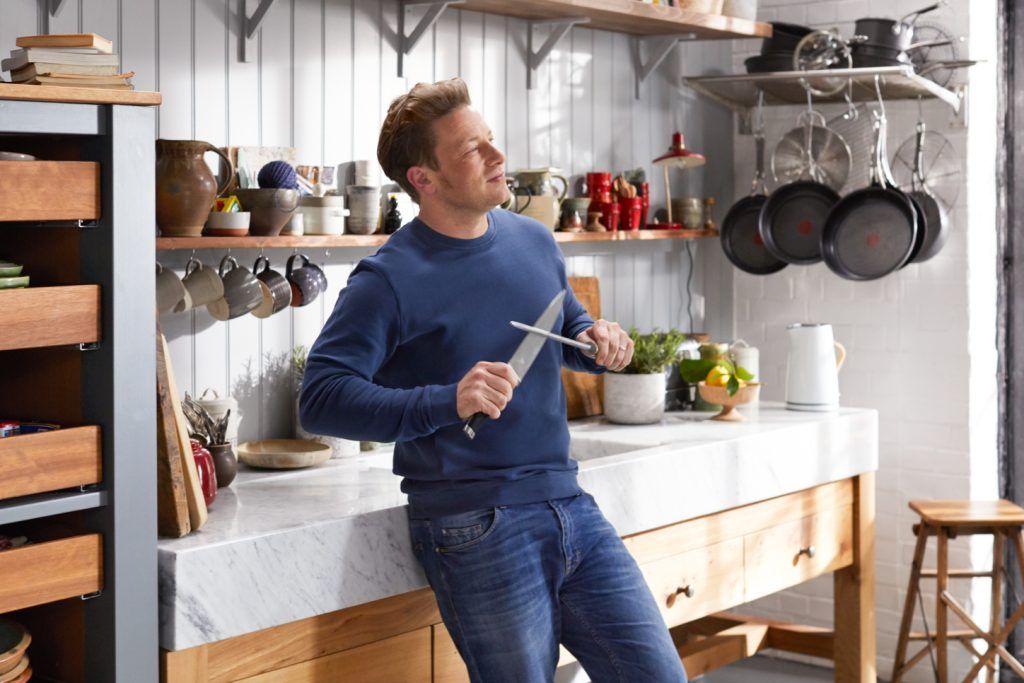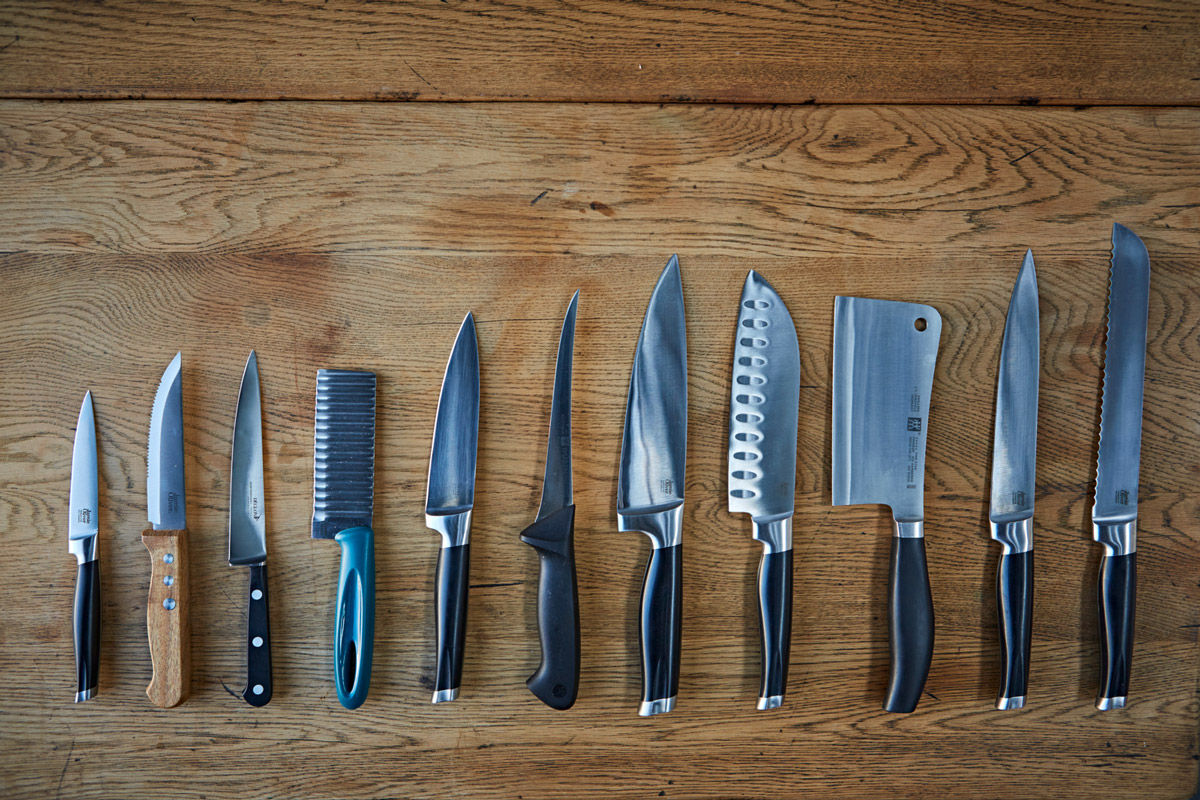Knives are one of the most important tools in the kitchen, so it’s vital you keep them sharp – not only will sharp knives make you more efficient, they’re safer, too.
All knives, no matter the brand, will dull after a certain amount of use. Then if you’re using a blunt knife, it’s much more likely to slip, so you could hurt yourself. This is why sharp knives are an absolute must for both beginners and advanced cooks. Plus, if your knife is sharp, it’s so much easier to chop more accurately, so you’re less likely to end up with wasted offcuts – it’ll also make your cooking experience a whole lot more enjoyable!
Honing versus sharpening
Before we go any further, let’s learn the difference between the terms ‘sharpening’ and ‘honing’. To maintain a knife and keep it sharp, we often think we need to sharpen them, when we actually just need to hone them.
So, what is honing?
When a knife is used, the edge will turn either to the left or right side depending on how you hold your knife when cutting, making it bend over time. To remedy this, you need to hone your knife. Honing is what you do to maintain or straighten a knife’s sharp edge. To do this, you use what is called a steel (confusingly, a steel is sometimes called a sharpening steel!). Don’t use a pull-through sharpening device as this will destroy your turned edge.
Sharpening a knife
This will grind the knife’s metal to a sharp edge – you do this when your knife is blunt, but with regular honing, you shouldn’t need to do this. Sharpening a knife will remove more metal from the blade, so it’s best not to do this often.
Best practice is to regularly hone your knives so you maintain their sharpness, rather than using them until they’re blunt. Hone your knives every couple of months, and sharpen only when they’re blunt.
How to hone a knife with a steel
- Place the hilt of the knife blade against the tip of a steel at a slight angle (about 20 degrees).
- Pull the knife down and across the steel, describing a slight arc. Repeat four times. Watch how Jamie does it.
- Repeat this action on the back of the steel another four times, to sharpen the other side of the blade.
NOTE: Speed isn’t important here – instead, it’s key to maintain the angle of 20 degrees and run the full length of the cutting edge along the steel, from the hilt to the tip of the knife.
How to sharpen a knife
Waiting until your knife is really blunt, when the edge has completely worn away, means when you come to sharpen it you’ll need to remove a lot more metal. This reduces the knife’s life-span and you’ll find you’ll go through a lot more this way.
If your knives are really blunt, you may need to get a professional to sharpen them. If you need to sharpen them slightly, there are many affordable, hand-held sharpening devices you can buy, which will help you to sharpen (not hone) your knives as and when they need it. You can also use a whetstone, but it’s more expensive and trickier to use.
Remember, if you hone your knives regularly, you shouldn’t need to sharpen them as regularly.
Planning the ultimate dinner to impress your family and friends? We can help make it a breeze with Jamie’s top Tefal kitchen knives range. With ice hardening technology these knives give you a fantastic sharp edge that makes them last longer. Whether you’re chopping veggies, carving a roast, or filleting fish, these versatile blades will handle it all.























